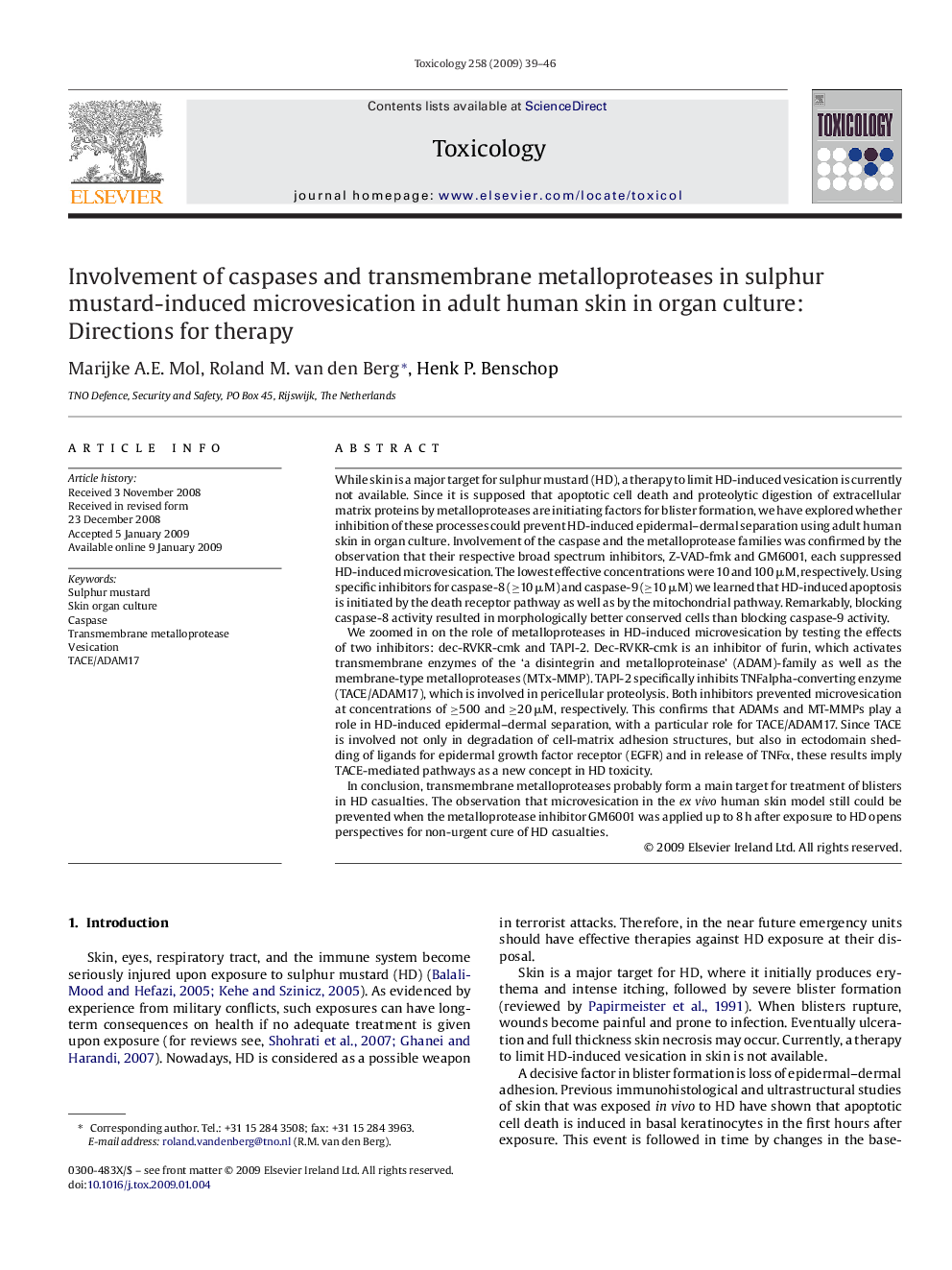| Article ID | Journal | Published Year | Pages | File Type |
|---|---|---|---|---|
| 2596868 | Toxicology | 2009 | 8 Pages |
While skin is a major target for sulphur mustard (HD), a therapy to limit HD-induced vesication is currently not available. Since it is supposed that apoptotic cell death and proteolytic digestion of extracellular matrix proteins by metalloproteases are initiating factors for blister formation, we have explored whether inhibition of these processes could prevent HD-induced epidermal–dermal separation using adult human skin in organ culture. Involvement of the caspase and the metalloprotease families was confirmed by the observation that their respective broad spectrum inhibitors, Z-VAD-fmk and GM6001, each suppressed HD-induced microvesication. The lowest effective concentrations were 10 and 100 μM, respectively. Using specific inhibitors for caspase-8 (≥10 μM) and caspase-9 (≥10 μM) we learned that HD-induced apoptosis is initiated by the death receptor pathway as well as by the mitochondrial pathway. Remarkably, blocking caspase-8 activity resulted in morphologically better conserved cells than blocking caspase-9 activity.We zoomed in on the role of metalloproteases in HD-induced microvesication by testing the effects of two inhibitors: dec-RVKR-cmk and TAPI-2. Dec-RVKR-cmk is an inhibitor of furin, which activates transmembrane enzymes of the ‘a disintegrin and metalloproteinase’ (ADAM)-family as well as the membrane-type metalloproteases (MTx-MMP). TAPI-2 specifically inhibits TNFalpha-converting enzyme (TACE/ADAM17), which is involved in pericellular proteolysis. Both inhibitors prevented microvesication at concentrations of ≥500 and ≥20 μM, respectively. This confirms that ADAMs and MT-MMPs play a role in HD-induced epidermal–dermal separation, with a particular role for TACE/ADAM17. Since TACE is involved not only in degradation of cell-matrix adhesion structures, but also in ectodomain shedding of ligands for epidermal growth factor receptor (EGFR) and in release of TNFα, these results imply TACE-mediated pathways as a new concept in HD toxicity.In conclusion, transmembrane metalloproteases probably form a main target for treatment of blisters in HD casualties. The observation that microvesication in the ex vivo human skin model still could be prevented when the metalloprotease inhibitor GM6001 was applied up to 8 h after exposure to HD opens perspectives for non-urgent cure of HD casualties.
